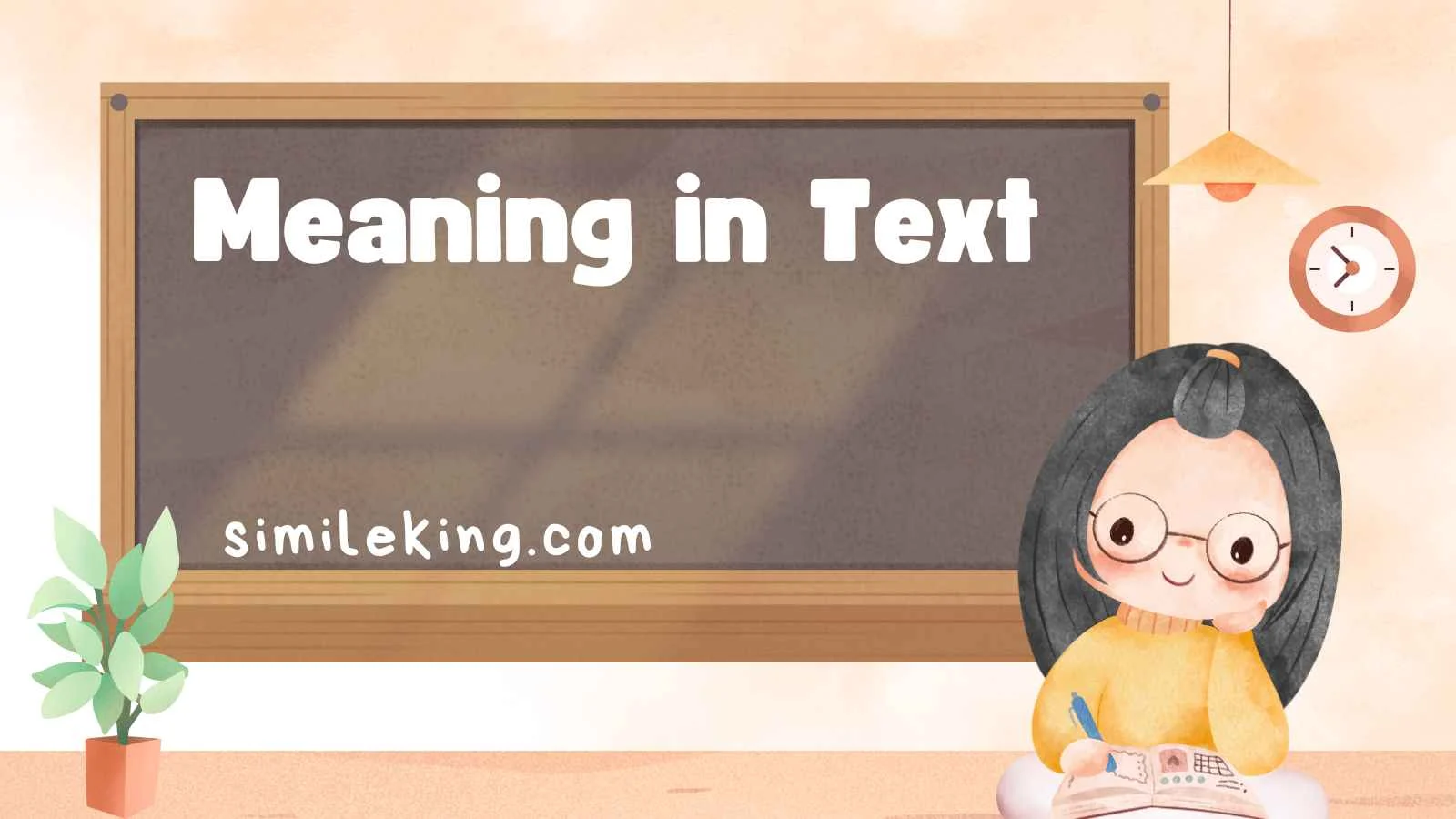In today’s digital world, where communication happens mostly through messaging apps, emails, and social platforms, understanding the “meaning in text” has become more important than ever. Whether you’re decoding acronyms like BRB or SMH, interpreting emotional undertones, or clarifying professional expressions, the phrase “meaning in text” goes far beyond a simple dictionary definition.
This article provides the ultimate 2025 guide to understanding what “meaning in text” truly means, how it is used in different contexts, and which polite, professional, and casual alternatives you can adopt. Unlike short articles found elsewhere, this guide digs deeper, giving you fresh insights, real-life examples, tone variations, and advanced strategies to ensure your messages are always clear and well-received.
What Does “Meaning in Text” Actually Mean?
At its core, the phrase “meaning in text” refers to the interpretation of words, abbreviations, phrases, or expressions used in digital communication. When someone asks, “What’s the meaning in text?” they are usually looking for:
- Clarification of acronyms or abbreviations (e.g., LOL, BTW, IDK).
- Contextual understanding (is the message casual, sarcastic, professional, or affectionate?).
- Hidden tone or implication (does “fine” really mean fine, or is it masking annoyance?).
Thus, meaning in text goes beyond just literal interpretation—it also captures tone, emotion, and cultural context.
Why “Meaning in Text” Matters in 2025
In 2025, text-based communication has expanded into nearly every part of life: work, friendships, dating, education, and business. Misunderstanding a phrase can lead to miscommunication, awkwardness, or even lost opportunities.
- In workplaces, clarity prevents confusion in tasks or professional emails.
- In friendships, knowing tone prevents arguments (“K.” vs. “Okayyy!”).
- In social media, understanding trends keeps you culturally relevant.
- In education, text interpretation builds digital literacy.
For example, if someone texts you “I’m dead”, it doesn’t mean danger—it’s a modern slang way of saying “That’s so funny I can’t stop laughing.” Without context, it could easily be misinterpreted.
The Linguistic Layers of Meaning in Text
To understand the true meaning in text, we need to explore its layers:
1. Literal Meaning
The straightforward dictionary definition.
- Example: “I’ll be late” means the person won’t arrive on time.
2. Pragmatic Meaning
The context behind the words.
- Example: “We’ll see” may literally sound neutral but often means “probably not.”
3. Emotional Undertone
Tone expressed through punctuation, emojis, or spelling.
- Example: “Sure.” feels different from “SUREEEE 😁.”
4. Cultural or Generational Meaning
Phrases may shift meaning depending on age or community.
- Example: “Salty” once meant “tasting like salt” but now means “annoyed.”
Common Contexts of “Meaning in Text”
Here are some of the most frequent ways people use or ask about meaning in text:
- Acronyms & Abbreviations – “What does IMO mean in text?”
- Slang & Trends – “What does rizz mean in text?”
- Professional Phrasing – “What does per my last email mean in text?”
- Romantic Messages – “What does wyd mean in text from a crush?”
- Tone Clarification – “What does a period at the end of a text mean?”
Each of these contexts requires different interpretations and alternative ways to respond.
Professional Alternatives to “Meaning in Text”
When writing formally (emails, academic papers, reports), instead of saying “meaning in text”, you can use:
- Interpretation of text – academic and precise.
- Contextual definition – ideal for business or legal writing.
- Textual implication – formal and analytical.
- Linguistic meaning – advanced and scholarly.
- Message intent – professional clarity.
Example (workplace email):
Instead of writing:
👉 “Can you explain the meaning in text of this report?”
Try:
👉 “Could you clarify the contextual definition of this phrase in the report?”
Polite Alternatives to “Meaning in Text”
When you want to ask respectfully without sounding too direct:
- Could you clarify what this means?
- What does this phrase suggest?
- How should I interpret this?
- Could you explain the intention behind this message?
- I’d appreciate it if you could unpack this meaning for me.
Example (polite text):
👉 “Hey, I’m not sure I got the meaning in text—could you clarify what you meant?”
Casual Alternatives to “Meaning in Text”
When chatting with friends or on social media, casual options keep the tone light:
- What’s that supposed to mean?
- Lol what does that even mean?
- Wait… explain 😂
- Bruh, meaning??
- So basically you mean…?
Example (casual chat):
👉 “Bro, you said ‘I’m cooked’—meaning?? 🤔”
10 Real-World Examples of “Meaning in Text” (2025 Edition)
Here are fresh, practical examples showing how “meaning in text” appears in real life:
- Acronym – “She texted me ‘SMH’—what’s the meaning in text?” → (SMH = shaking my head).
- Workplace phrase – “When a manager says ‘noted,’ the meaning in text is often dismissive rather than approving.”
- Emoji use – “A single ‘👍’ in text can mean agreement or sarcasm, depending on tone.”
- Romantic chat – “If someone says ‘wyd’ every night, the meaning in text suggests they want consistent conversation.”
- Sarcasm – “When someone says ‘Wow, amazing job’ after a mistake, the meaning in text is ironic.”
- Cultural slang – “In 2025, ‘delulu’ in text means unrealistic expectations, usually in dating contexts.”
- Generational gap – “Parents may see ‘ghosted’ as scary, but the meaning in text is simply being ignored.”
- Professional reply – “When HR writes ‘We’ll keep your resume on file,’ the meaning in text is usually rejection.”
- Friendship tone – “If someone replies with just ‘k,’ the meaning in text suggests annoyance or lack of interest.”
- Online trends – “In TikTok slang, ‘main character energy’ in text means someone acting confidently like the star of a story.”
How to Choose the Right Alternative (Tone Guide)
When asking about meaning in text, the tone you choose changes how others perceive you.
- Formal / Academic → Use “interpretation of text” or “contextual definition.”
- Professional / Workplace → Use “message intent” or “clarification of meaning.”
- Polite → Use “could you clarify” or “how should I interpret this?”
- Casual → Use “what’s that mean?” or “lol explain.”
Always match your phrasing to your audience. For example, you wouldn’t ask your boss “Bruh, meaning??” but you could say that to a friend.
Advanced 2025 Insights: The Future of “Meaning in Text”
Looking ahead, the concept of “meaning in text” is evolving. AI-driven messaging platforms, predictive text, and cultural shifts are reshaping how we interpret words.
- AI and Chatbots – Messages may be pre-written by AI, so “meaning in text” will increasingly involve identifying whether the message was human or machine-generated.
- Emoji Evolution – New emojis in 2025 (like “melting face” or “saluting face”) bring layered meanings that need interpretation.
- Cultural Variability – A word may mean one thing in the U.S. and something else entirely in Asia or Europe.
- Hybrid Communication – Texts now blend GIFs, memes, and voice-to-text, expanding what “meaning” can include.
Thus, digital literacy—the ability to decode meaning in text—is becoming an essential skill in personal and professional life.
Conclusion
The phrase “meaning in text” is more than just a question about definitions—it’s about understanding tone, culture, emotion, and intention behind written words. Whether you’re texting a friend, writing a professional email, or decoding the latest slang trend in 2025, knowing how to interpret meaning in text ensures better communication and stronger connections.
By using the alternatives provided—formal, polite, or casual—you can adapt your communication style to any setting while avoiding misunderstandings.
Remember: Words carry weight, and the meaning in text depends on not just what’s written, but how it’s perceived.





